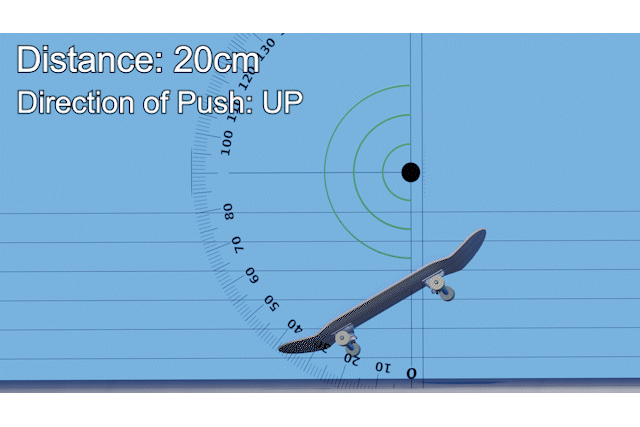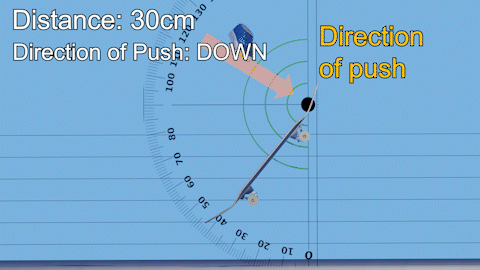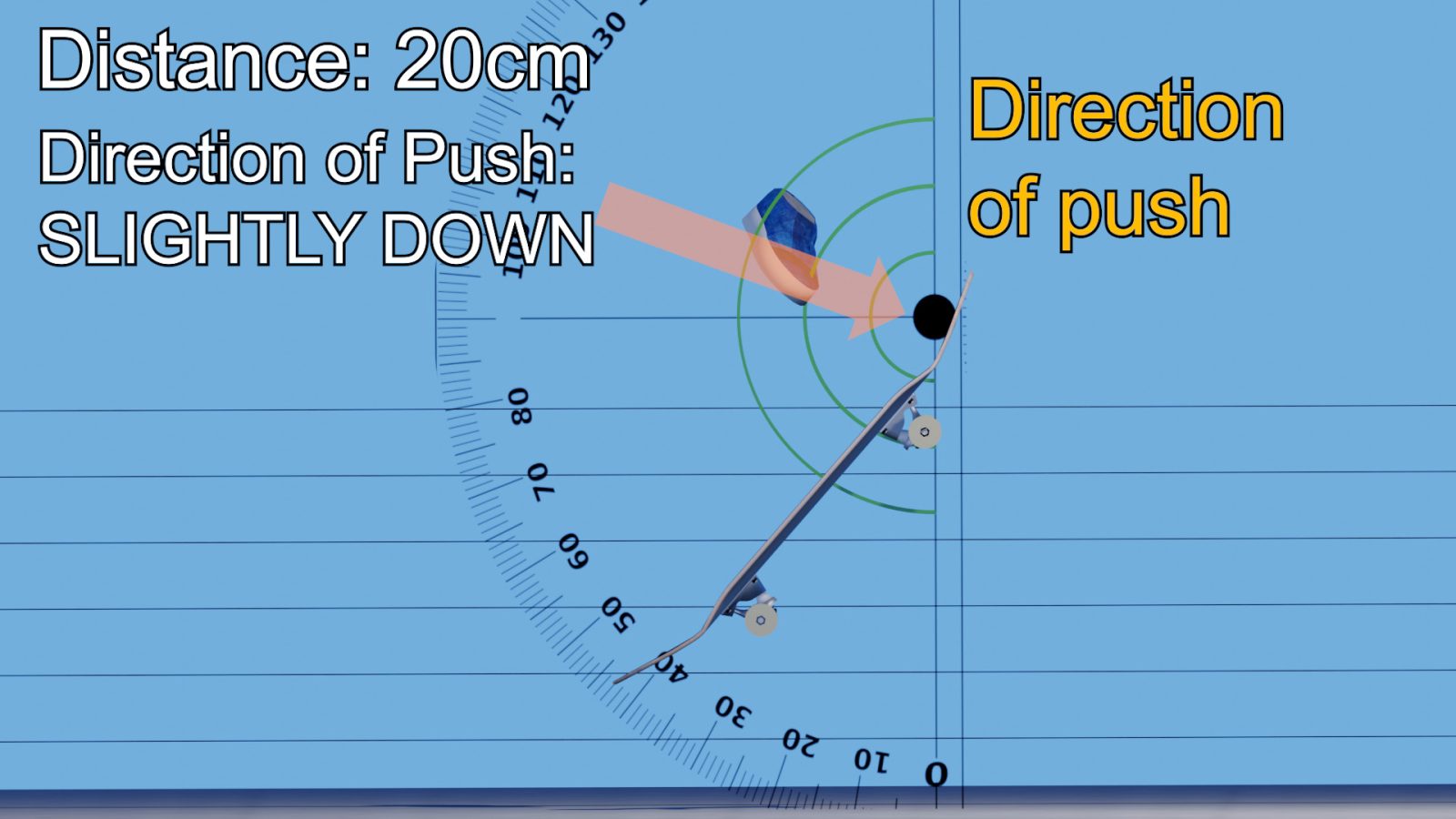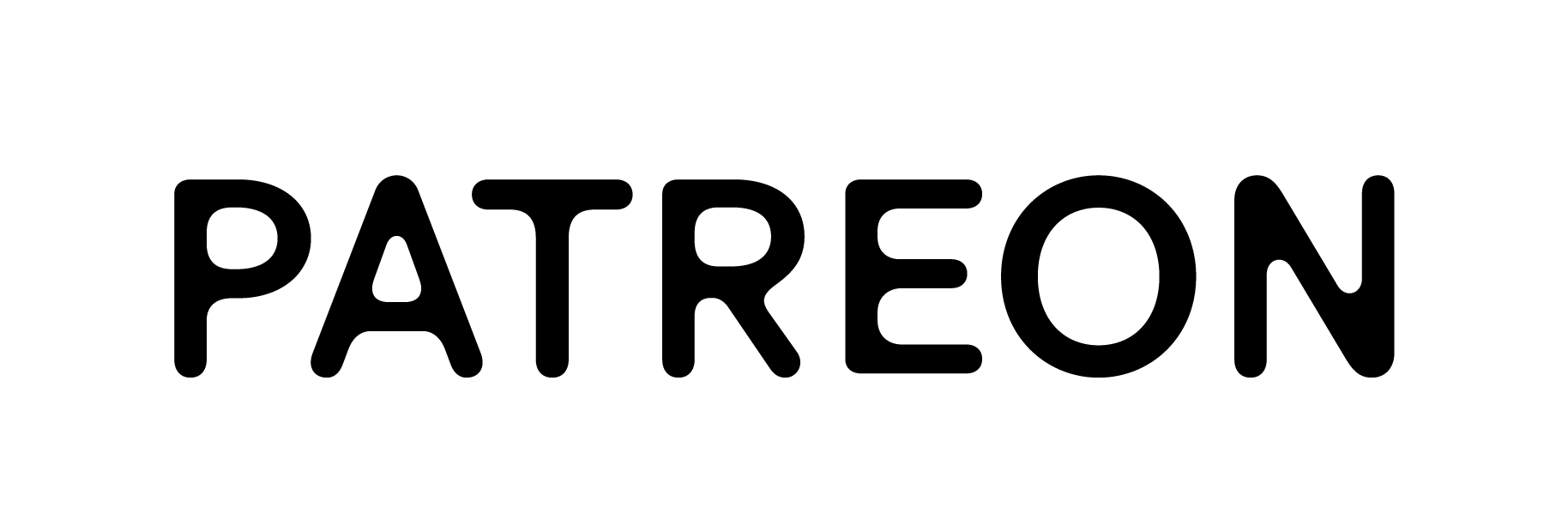This content focuses on theories of an Ollie and mainly uses a physics engine. If you want more real-life-based skate content, please return next time.
This experiment mainly aims to verify the effect of an immediate impact. Please note that the actual physics may differ from this result because the front foot continuously applies force in reality.
Summary
Pushing the front foot at 110° lifts the tail most effectively.
According to the estimation results of a physics engine, holding the nose from 110 degrees above allows you to suppress the rising speed of the nose effectively and lets the tail go up.
Question
In theory, in which direction should you push the nose?
Last time, we saw our bodies pull up our front feet in an Ollie, and we needed to push them down to lift the tail effectively.
This time, we will verify which direction and how much force we should apply using a physics engine to avoid subjective bias.

Premises of experiment
Basic Conditions
- Will exclude the process of sliding up the board from this experiment's scope.
- Will push the nose by throwing a foot (not a shoe) which weighs 3 kg.
- It is said the weight of a foot is 2% of the whole body; if the entire body is 60 kg, 2% is 3 kg.

Supplimentary Information
- Rings in green mean distances between the board and the foot's starting point. The foot moves within the same duration of time in all conditions, so the distance translates to its speed.
- *We'll use a simpler version of 3D model, as we can expect better results from the physics engine.

Direction of push: UP
Method
In the first case, the front foot continues moving in the same direction as its sliding motion. You may often do this when you are not used to doing Ollies by concentrating too much on the sliding movement.

Result and Analysis
Even if you move the front foot faster, the board won't level.
So why? As I mentioned in the previous content, you must utilize the board's momentum to level the board; after popping, the board keeps going upward even while you are holding down the nose. When you apply a force parallel to the board, you may be able to lift the board by pulling up the nose, but the force of the board's center of gravity cannot effectively lift the tail.
A common mistake is to move the front foot forward relative to your body: the body's center of gravity pulls the front foot up after popping, resulting in the front foot going diagonally upward.

Direction of push: HORIZONTAL
Method
In this case, you move your front foot horizontally. Lowering your front foot against the body's upward momentum allows you to offset it and move it horizontally.

Result and Analysis
The deck levels this time. However, depending on the front foot's speed, it levels only after coming down low. It would help to move your front foot fast.
While the front foot suppresses the lifting force of the nose, the board's center of gravity continues to move upward and lifts the tail.

Direction of push: DOWN
Method
In this case, we will push/lower the nose from 120 degrees.

Result and Analysis
With a small force, the board will fall as if nothing had happened. With a strong force, it pushes the board down against the board's upward momentum.
If you apply too much downward force, the force that raises the center of gravity will disappear.

Direction of push: SLIGHTLY DOWN
Method
The front foot applies a force from 110 degrees above.
I have not verified all the conditions, but this case has produced the best performance.

Result and Analysis
By suppressing the nose from 110 degrees, you can effectively suppress the rising force of the nose. At the same time, the board's center of gravity lifts the tail without being offset by the front foot.



